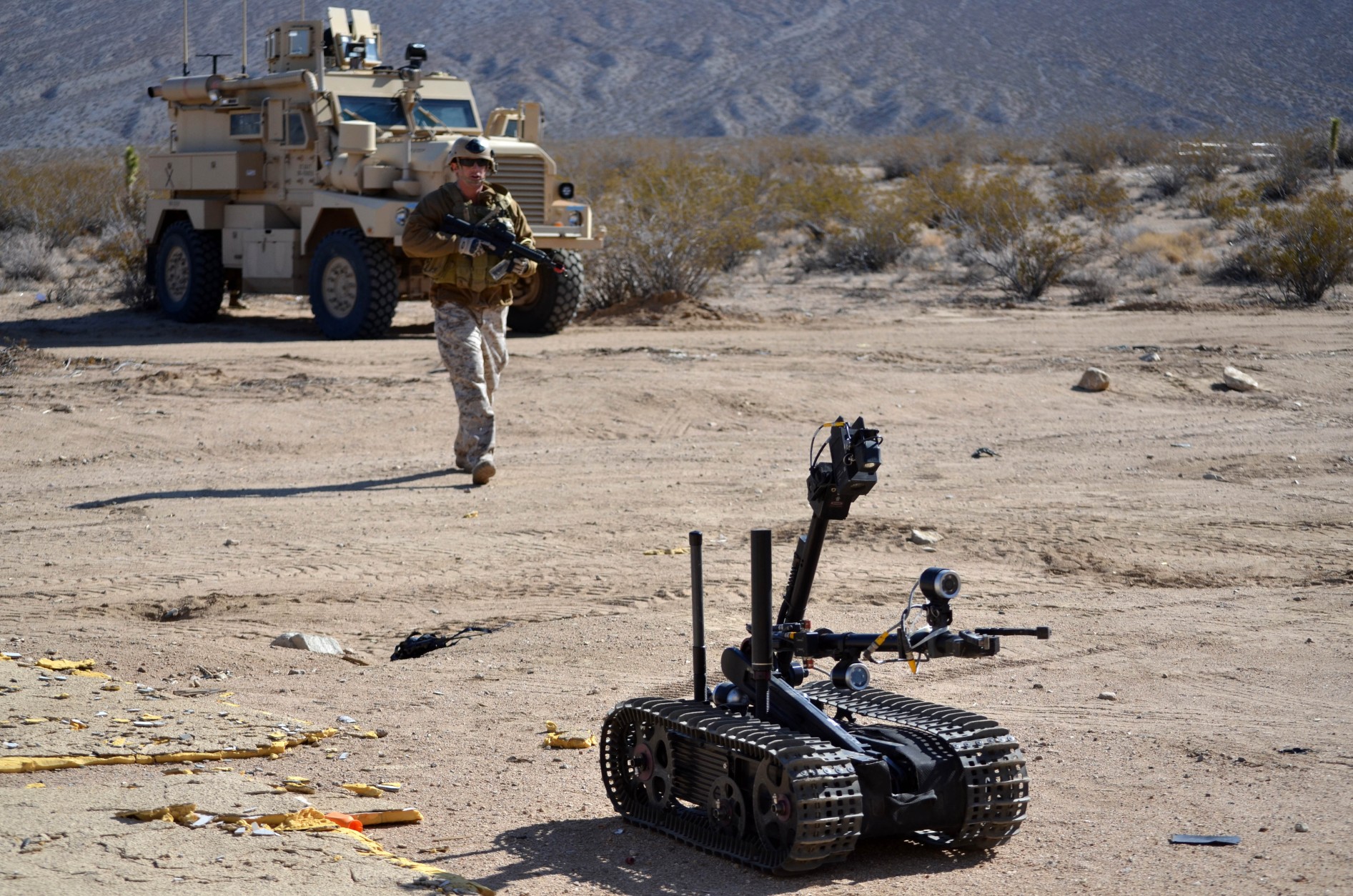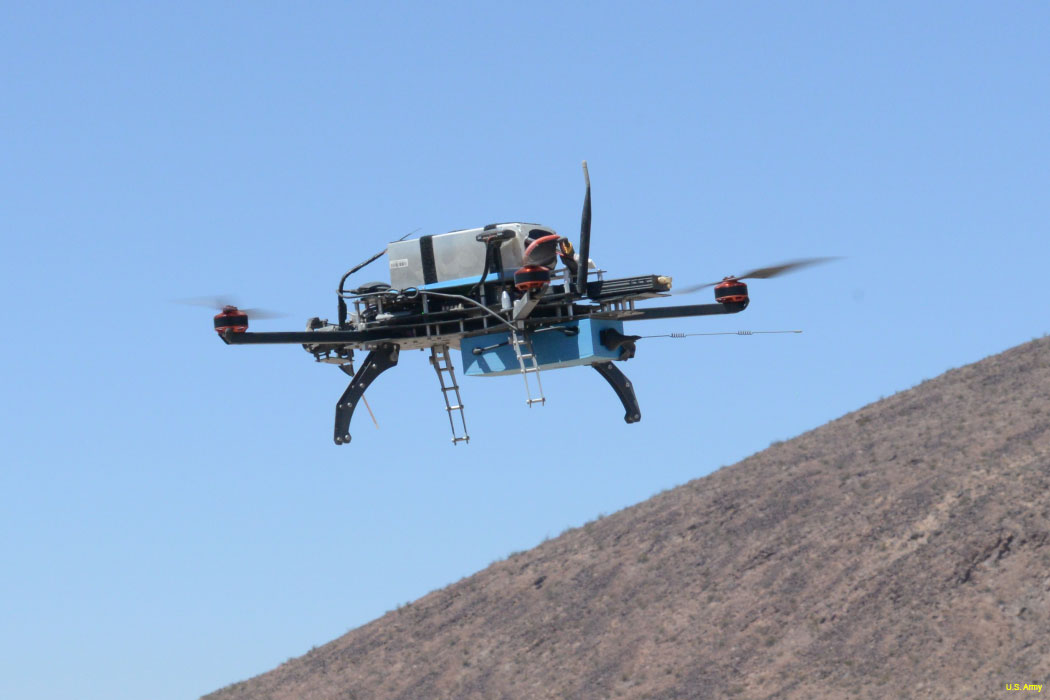The Future is Here: How the Military Uses Robots

The most notable use of robots in the military over the past few decades is also the first thing that will spring to mind for most: the usage of Unmanned Aerial Vehicles, or UAVs, more commonly called drones. These drones have been deployed in combat situations throughout the Middle East. Piloted by personnel in secure locations hundreds - if not thousands - of miles away, these small aircraft carry out all manner of missions, from reconnaissance to strategic strikes. There are over 7,000 of them in service, and the next generation of robot aircraft will only expand on the task. The Future Vertical Lift (FVL) program will have drones that will operate even more independently - and with greater mission parameters - than present-day drones.

There are all kinds of UAVs used by the Military.
The U.S. Navy is also bringing robots into modern sea operations. The Navy has already enlisted the help of Boeing to start its undersea drone fleet, with four unmanned submarines called "Orcas." These mighty 51-foot ships will be able to be used for all manners of undersea and surface warfare and reconnaissance missions. The Orcas will join the robotic arm of the fleet already consisting of the prototype Sea Hunter ship. The Sea Hunter is an unmanned, remotely-controlled vessel that can patrol up to three months at a time with a range of 10,00 miles; it can remotely track and hunt down enemy submarines. In the future? The robotic fleet will only grow bigger, faster, and stronger. Plans are in the works for a robot shop out there to create full fleets of unmanned ships - ones that can not only serve as "scouts and decoys," but also ones that will be able to be sent into combat. It's a long way from the days of dreadnoughts and ironclads.

Boeing's prototype, a 51-foot ship which will be used in undersea and surface warfare and reconnaissance missions.
Finally, the U.S. Army makes significant use of robots in their operations. At present, the Army uses robots for a wide range of roles - including bomb disposal and reconnaissance. In the future, the Army is developing (or has created) entire classes of robots for battlefield usage, in categories defined as light, medium, and heavy. Many of these robots have already been deployed or will be deployed soon - like the Man-Transportable Robotic System, or MTRS. This robot, scheduled to go into service in the summer of 2019, is an all-purpose tool to detect and alert significant threats. Other models, like the Scorpion, from Endeavor Robotics - which can have its robot parts be (partially) repaired by using a 3D printer - are battling it out to be selected as the Army's next metallic front-line soldier. As for the future of Army robots? The possibilities are endless; robotic tanks, artillery vehicles, and reconnaissance vehicles may replace the tried-and-true technologies of today's armies.
It's not just the American military that is utilizing these robotic elements. Military forces around the world are embracing the technology. The British Army is testing an artificial intelligence battlefield program called SAPIENT. The French are aiming to bring robots into their army units through their "Scorpion" program. Even the Canadian military is integrating robotic "Defender Sentry Units" into their military training exercises.

Robots can save wounded soldiers from the battlefield.
If robots are indeed the future of the military, there are plenty of positive side effects to come with it. The savings - both in money and in lives - are bound to be massive, and the prospect of advanced robotics on the front lines would be a powerful deterrent. A conflict that is fought with robots could be one that costs minimal lives and limbs - or is one that may never be fought at all. Count on RobotShop to keep you updated as more and more robots join the ranks.
PICTURE CREDITS:
https://www.flickr.com/photos/usnavy/6816158634/
https://www.army.mil/article/174059/unmanned_aerial_vehicle_to_provide_battlefield_intelligence
https://www.popularmechanics.com/military/navy-ships/a26344025/navy-extra-large-unmanned-submarines-boeing/
https://www.army.mil/article/111016/talon_iv_training_keeps_soldiers_safe
SOURCES:
https://science.howstuffworks.com/robots-replacing-soldiers1.htm
https://www.fcnl.org/updates/understanding-drones-43
https://canadianarmytoday.com/robotic-weapon-system-puts-soldiers-skills-to-the-test/
https://www.c4isrnet.com/unmanned/robotics/2018/01/30/furious-program-could-lead-to-combat-robots-for-french-army/
https://www.technologyreview.com/the-download/612409/the-british-army-is-carrying-out-a-massive-test-of-military-robots-and-drones/
https://www.aviationtoday.com/2018/04/09/militarys-vertical-lift-plans-necessitate-advanced-drones/
https://www.nextbigfuture.com/2019/02/us-navy-buys-four-large-robotic-submarine-drones.html
https://nationalinterest.org/blog/buzz/game-changer-us-navy-wants-robotic-warships-42267
https://www.naval-technology.com/features/sea-hunter-inside-us-navys-autonomous-submarine-tracking-vessel/
https://www.tomsguide.com/us/scorpion-robots-us-army,news-28771.html
https://www.bloomberg.com/news/articles/2018-05-18/the-u-s-army-is-turning-to-robot-soldiers
https://asc.army.mil/web/portfolio-item/cs-css-man-transportable-robot-system-mtrs-increment-2/
https://www.thedrive.com/the-war-zone/26513/boeing-is-building-the-navy-big-orca-submarine-drones-to-hunt-and-lay-mines-and-more
Thanks for helping to keep our community civil!
This post is an advertisement, or vandalism. It is not useful or relevant to the current topic.
You flagged this as spam. Undo flag.Flag Post


